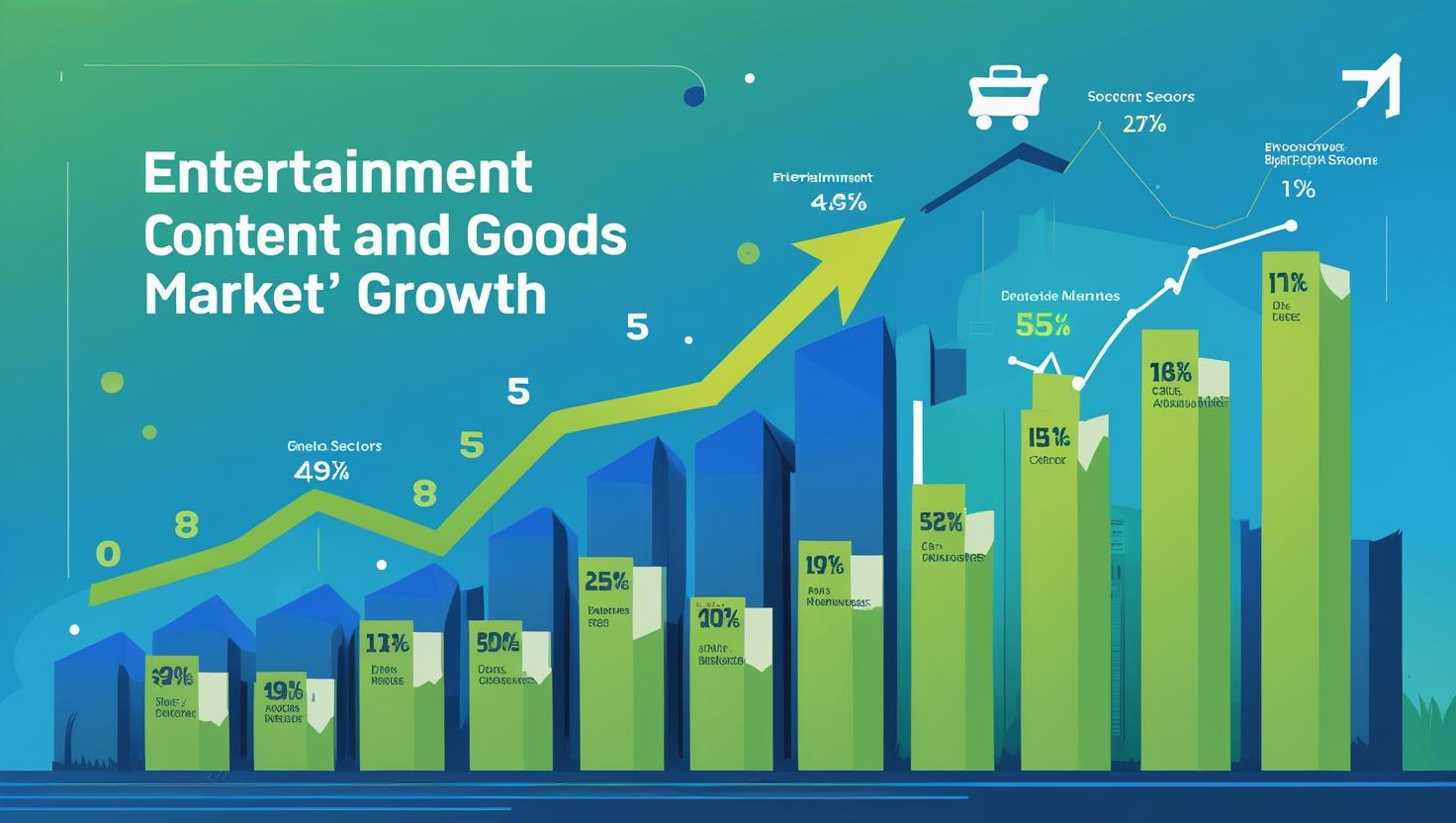The entertainment industry is undergoing a seismic transformation. Fueled by rapid technological advancement, evolving consumer behavior, and the expansion of digital ecosystems, the entertainment content and goods market is growing at an unprecedented pace. No longer confined to movie theaters or traditional retail stores, today’s content is streamed, gamified, merchandised, and shared globally in real time—creating a dynamic, multi-billion-dollar market that spans both physical and digital realms.
This explores the key trends, market drivers, and future outlook shaping the global entertainment content and goods market through 2030 and beyond.
Understanding the Market Landscape
The entertainment content and goods market encompasses a wide range of offerings, including:
-
Digital content: films, music, TV shows, streaming media, eBooks, podcasts, and video games.
-
Physical and digital goods: licensed merchandise, collectibles, apparel, DVDs, and digital downloads tied to entertainment franchises.
-
Experiential products: theme parks, VR experiences, concerts, and fan-driven events.
As boundaries blur between content creation, consumption, and commerce, companies are now leveraging IP (intellectual property) to drive value across platforms and consumer touchpoints.
Key Market Trends
1. Streaming Wars and Platform Expansion
Streaming services like Netflix, Disney+, Amazon Prime Video, and Apple TV+ have redefined how content is consumed. With fierce competition for exclusive rights, original programming, and global audiences, platforms are investing heavily in localized content and fan-favorite franchises to capture loyalty.
2. Rise of Fan Economy and Branded Merchandise
Fans today are more engaged than ever—and more willing to spend. From limited-edition collectibles to co-branded fashion lines and gaming gear, licensed entertainment merchandise is a major revenue driver. Iconic franchises like Marvel, Star Wars, and Pokémon generate billions annually through merchandise alone.
3. Gaming and Interactive Content Boom
Gaming has evolved into a cultural juggernaut. Interactive content, esports, and in-game purchases now rival—and often surpass—traditional forms of entertainment in both engagement and revenue. Franchises like Fortnite, Roblox, and Minecraft have turned virtual goods into real-world profits.
Download PDF Brochure @ https://www.marketsandmarkets.com/pdfdownloadNew.asp?id=206501829

4. Technological Innovation: AR, VR & AI
Emerging technologies are reshaping the consumer experience. AR filters, VR concerts, AI-generated music, and immersive storytelling are bringing entertainment to life in new ways. These innovations not only enhance engagement but also open new monetization avenues.
5. Globalization of Entertainment IP
Entertainment has gone global. Streaming services and social media platforms have accelerated the cross-border appeal of films, series, music, and characters. Korean dramas, Japanese anime, and Latin music have found passionate audiences far from their home markets.
Entertainment Content and Goods Market Drivers
The entertainment content and goods market is expected to grow from USD 177.64 billion in 2025 to USD 239.52 billion by 2030, at a CAGR of 6.2% from 2025 to 2030. Several macro and micro-level factors are fueling growth in this market:
-
Digital transformation of media and retail
-
Direct-to-consumer models reducing reliance on intermediaries
-
Expansion of high-speed internet and mobile devices
-
Increased time spent on digital platforms, especially among Gen Z and Millennials
-
Strategic partnerships between entertainment companies and fashion, gaming, and tech brands
-
Data-driven personalization enhancing content recommendations and product targeting
Challenges and Considerations
While growth is strong, the market also faces challenges:
-
Content saturation: With endless content options, retaining user attention is harder than ever.
-
Piracy and IP protection: Digital goods are easier to replicate and distribute illegally.
-
Economic sensitivity: Discretionary spending on content and goods may fluctuate with economic conditions.
-
Fragmentation of platforms: Users are spread across dozens of services, complicating distribution and monetization.
Future Outlook
The entertainment content and goods market is poised for continued growth, with projections indicating a multi-trillion-dollar global market by the end of the decade. Key areas to watch include:
-
Metaverse integration: Virtual worlds will increasingly merge entertainment with commerce and social interaction.
-
AI-generated content: From music to scripts, AI will play a growing role in content creation and customization.
-
Niche fandoms and micro-communities: Smaller, hyper-engaged audiences will drive demand for exclusive and personalized merchandise.
-
Sustainability in physical goods: Consumers are demanding more eco-friendly entertainment merchandise and packaging.
The entertainment content and goods market is no longer about just “watching” or “buying.” It’s about experiencing, participating, and owning a piece of a larger cultural moment. As creators, tech companies, and brands find new ways to tell stories and engage audiences, the line between content and commerce will continue to blur—creating a more immersive, personalized, and profitable future.
For businesses and investors, the message is clear: the opportunity in entertainment is bigger, more global, and more dynamic than ever before.
Entertainment Content and Goods Market – FAQ
1. What is the entertainment content and goods market?
The entertainment content and goods market includes both digital content (such as movies, TV shows, music, video games, and streaming media) and physical or digital goods (such as licensed merchandise, collectibles, apparel, and media-related products) tied to entertainment IPs. It also encompasses experiential offerings like concerts, virtual events, and immersive experiences.
2. What are the main drivers of market growth?
Key drivers include:
-
Expansion of streaming platforms and digital consumption
-
Growing demand for branded merchandise and collectibles
-
The rise of gaming and interactive content
-
Technological advancements like AR, VR, and AI
-
Global access to high-speed internet and mobile devices
-
Strong fan engagement and the fan economy
3. How has streaming changed the entertainment market?
Streaming has shifted content consumption from physical and scheduled formats (like DVDs or TV broadcasts) to on-demand, digital-first platforms. It enables global distribution, personalized content recommendations, and direct-to-consumer monetization, reducing reliance on traditional channels.
